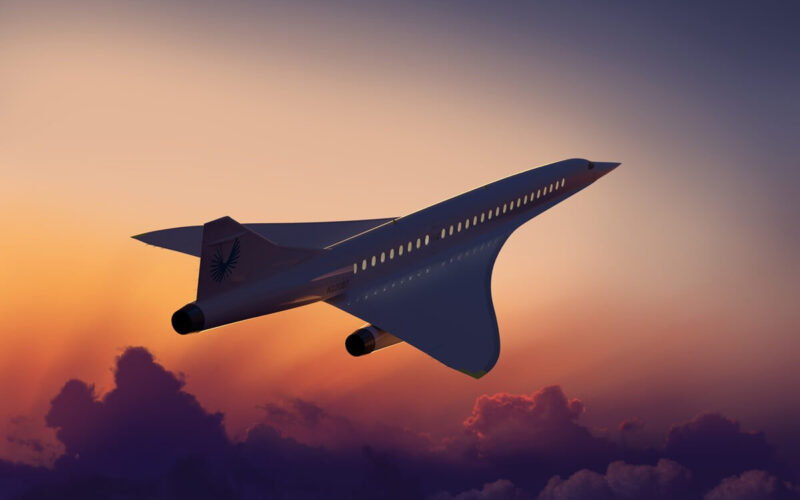Pending regulatory approval, the Boom Overture, the fastest commercial aircraft to be, is expected to start operating passenger flights as early as 2029. However, like its legendary predecessor Concorde, it will not be cheap to get on board the supersonic airliner.
Its manufacturer, Boom Technology, estimates that the flight with the Overture may cost up to $5,000 per one-way ticket. Despite the expected high-ticket costs, several airlines worldwide have already included the upcoming supersonic jet in their future fleet plans.
The Boom Overture will be able to reach a speed of Mach 1.7 (about 2,100 kilometers per hour) and carry 65 to 88 passengers. That speed would allow going from New York to London in three hours and 30 minutes, against six hours and 30 minutes today.
AeroTime investigates the current deals for the Boom Overture.
The launch customer?
It was early 2016, when Richard Branson, British business magnate and founder of Virgin Group, officially confirmed that the parent company of Virgin Atlantic optioned ten Overture airliners. At the time the deal was ultimately valued at about $2 billion. Even though it did not mean that the airline bought those aircraft, by signing a Letter of Intent (LOI) the parties agreed that if both adhered to the terms, the deal would develop further as was initially planned.
In the meantime, another subsidiary of Virgin Group, The Spaceship Company (TSC) committed to supporting Boom Technology in the Overture development, testing and production.
Secret interests
Months after the first LOI was officially signed, an undisclosed Europe-based carrier decided to follow in Virgin Group’s steps. The deal included options for a total of 15 supersonic aircraft. And this is how the Overture brought its manufacturer another commitment worth $3 billion, at a time when the aircraft was just a wooden mock-up with some concept drawings.
During the 2017 Paris Air Show, Boom Technology racked up another 51 commitments for the Overture from unspecified customers.
The national carrier Japan Airlines (JAL) showed strong interest in the Overture project as early as December 2017. At the time the Tokyo-based airline made a rare move for a major commercial airline and agreed to make a significant cash investment into a start-up aircraft manufacturer. The airline decided to invest $10 million and buy a stake in Boom Technology.
Additionally, JAL made a pre-order for up to 20 of the Mach 2.2-capable airliners, making it the world’s second identified commercial airline to become a Boom customer.
The first domestic customer
United Airlines caught eye of the new supersonic aircraft project, claiming that the Overture would emit net-zero carbon, fitting perfectly into the air carrier’s long-term sustainability goals.
In June 2021, the Chicago-based airline signed an agreement with Boom Supersonic to purchase 15 Overture airliners, with an option for 35 more aircraft, once it meets United’s safety, operating, and sustainability requirements.
Thus, United became the first US customer for the Overture.
The world’s largest operator of supersonic airliners
American Airlines (A1G) (AAL) was seemingly not eager to let its direct competitor United steal the spotlight. The Texas-based carrier has announced a new agreement with Boom Technology.
Even though American Airlines (A1G) (AAL) gave up the title of being the first US airline to operate a supersonic aircraft for passenger service, it set itself another goal: becoming the world’s largest operator of Overture. In August 2022, it committed to purchase up to 20 Boom Overture supersonic aircraft with an option for an additional 40 jets.
Showing its intent, the airline confirmed it transferred a non-refundable payment to the manufacturer for the first 20 planes. However, it did not specify the value of the recent deal.
American Airlines (A1G) (AAL) said the Overture would give it a speed advantage over rivals, cutting transatlantic flight times between Miami to London to under five hours, for example.

